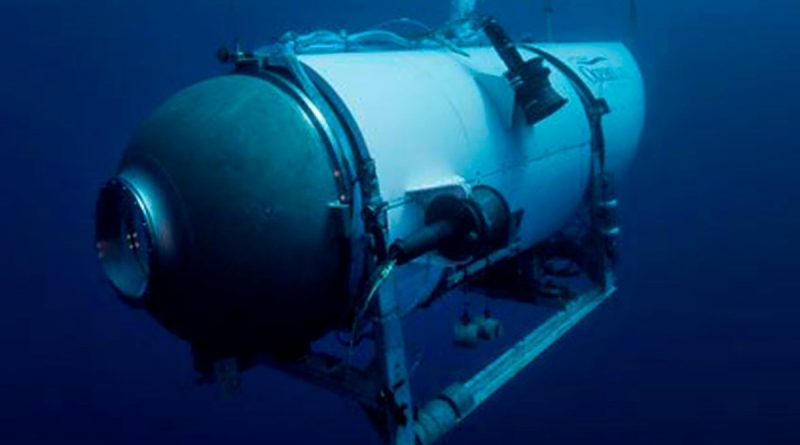Ocean depth chart shows just how difficult rescuing the Titanic sub really is
CBS report shows inner working of OceanGate’s Titanic sub
The deeper an object plunges below the ocean’s surface, the greater the pressure exerted on it by the water above it.
Atmospheric pressure at sea level is roughly 15 pounds per square inch – representing the weight of a square-inch column of air pushing down on the ground.
The floor on which the Titanic rests, and where the Titan submersible is most likely to be, is 12,500 feet below. That’s roughly 40 Big Bens, 12 Shards or 3 Ben Nevises.
At this depth, the pressure is some 5,800 pounds per square inch – 390 times more than up top – a huge amount of stress for any man-made craft to bear.
Reflecting on this, on Tuesday Royal Navy Commander Ryan Ramsey said that it has “probably imploded by now”. Even if it is miraculously still intact, the likelihood of a successful rescue mission is slim – especially since the crew’s emergency supply of oxygen is expected to run out in 24 hours.

At 3:13am BST on Monday morning, the small Titan submersible operated by OceanGate Expeditions used to take tourists down to view the Titanic was declared missing.
Five people were on board, including 58-year-old British explorer Hamish Harding and operating company CEO Stockton Rush.
Their last known position was around 400 miles south of Newfoundland, Canada, in the middle of the Atlantic.
The Titan submersible can reach depths of around 13,000 feet. The Titanic lies in a trench at around 12,500 feet deep – just within its operating range. Commander Ramsey added: “The pressures at that depth are absolutely huge. If there’s a fault in any part of that submarine or any crack then quickly the pressure takes hold and crushes it.”
Don’t miss…
Expert on reason Titanic crew did not see the iceberg coming[INSIGHT]
Expert fears it will take weeks to find the missing Titanic submarine[LATEST]
Company running Titanic sub took eight hours to report it missing[REVEAL]

All submersibles are extensively tested and thoroughly checked for faults. Most models, however, rarely venture below 1,500 feet, according to Marine Insight. The Titan is extreme for its kind.
Despite this, the constructor has faced multiple bouts of criticism over the years of its production and maintenance of deep-sea divers.
Three years prior to the Titan’s first voyage in 2021, David Lochridge, OceanGate’s director of marine operations, raised concerns about the company’s decision to rely on sensitive acoustic monitoring – listening to cracking or popping sounds made by the hull under pressure – to detect flaws, rather than making a scan of the hull.
This method, he claimed, would only reveal when a component was about to fail “milliseconds before implosion”.
Mr Lochbridge also alleged that while the craft’s carbon fibre and titanium walls were designed to withstand just over 13,000 feet of pressure, the passenger viewport was only certified for depths of up to 4,265 feet.
We use your sign-up to provide content in ways you’ve consented to and to improve our understanding of you. This may include adverts from us and 3rd parties based on our understanding. You can unsubscribe at any time. More info

Even if the vessel is intact and can be located, the depth at which it likely rests is a major obstacle for any would-be rescue dive.
Submarine expert Prof Alistair Greig from University College London told the BBC: “While the submersible might still be intact, if it is deeper than more than 200 metres (656 feet) there are very few vessels that can get that deep, and certainly not divers.
“The vehicles designed for navy submarine rescue certainly can’t get down to anywhere near the depth of the Titanic.”
Commander Ramsey said: “The technology, as far as I’m aware, doesn’t exist to carry out a rescue operation that deep.”
The deepest undersea rescue in history – when British engineers Roger Mallinson and Roger Chapman were trapped at a depth of 1,575 feet off the southwest coast of Ireland in 1973 – took place roughly eight times shallower.
Source: Read Full Article




